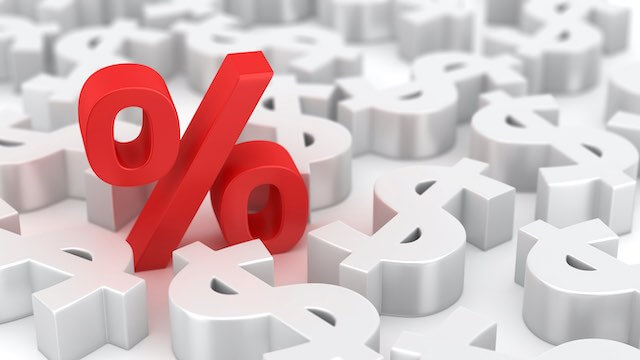Inflation has become a hot topic in 2021. When the first signs of inflation ramping up started to make news, the initial reaction by the Biden administration was that the problem was “transitory.” In other words, it was a temporary problem and would go away before creating financial problems.
Unfortunately, that has not been the case.
Inflation Up 0.8% in November 2021
In its latest report, the Bureau of Labor Statistics (BLS) wrote:
The Consumer Price Index for All Urban Consumers (CPI-U) increased 0.8 percent in November on a seasonally adjusted basis after rising 0.9 percent in October, the U.S. Bureau of Labor Statistics reported today. Over the last 12 months, the all items index increased 6.8 percent before seasonal adjustment.
In other words, inflation went up 0.8% in November and is now up 6.8% over the past twelve months.
Higher Inflation Rate for CPI-W Calculations
More ominous for many Americans is that the annual rate of inflation over the past 12 months is now up 7.6% as calculated by the CPI-W. The CPI-W is the measure used to calculate the annual cost-of-living-adjustment (COLA) for Social Security and federal annuity payments.
If it was not already obvious to anyone buying gas, groceries, or going Christmas shopping recently, as Federal Reserve Chairman Jerome Powell said late in November, it is time to stop referring to inflation in the economy as “transitory”.
5.9% 2022 COLA Starting in January
With inflation going higher, will this impact the 2022 cost-of-living-adjustment (COLA)?
Higher inflation will lead to a higher COLA, but readers will not see the impact of inflation continuing to rise until January 2023.
The 5.9% COLA increase that will appear in some checks for Social Security and in most federal retirees’ pension payments in January 2022 will not be going up for another year. The reason is that the annual COLA increase is based on the rate of inflation earlier in 2021.
The 2022 COLA increase was 5.9%. This 5.9% increase was the largest increase since 1982 when it went up 7.4% because of the high inflation rate.
For those with an eye on history, President Carter left office in 1981. The largest COLA was in 1980 when he was still in office. In 1980, the COLA hit 14.3%. For those who experienced that rapid rate of inflation and the financial impact that has on the financial picture for an average family, this rapid growth in inflation in 2022 will feel very familiar.
Does this mean that your purchasing power will go down in 2022 if inflation continues to go up rapidly? That is the case. The higher the rate of inflation, the more dollars it will take to purchase goods and services.
Perhaps the 2023 COLA will be even higher than the 5.9% COLA for 2022. So, while the COLA may provide an increase each year as a result of inflation, actual purchasing power will still decline as the COLA lags the inflation increase each year.
What Impact Will Inflation Have on the 2022 Federal Pay Raise?
At this moment, all indications are that the annual pay raise for federal employees will average 2.7%. That is the result of a raise of 2.2% with an additional 0.5% to be used for locality pay area increases. Federal employees in areas such as San Francisco, Washington, DC, and New York City will probably be higher than 2.7%.
The 2022 pay raise is not yet finalized.
President Biden issued his alternative pay plan in August. This plan determines the amount of the annual pay raise each year unless Congress intervenes. As of this writing, Congress has not made any move to increase the 2.7% annual pay raise.
The president will issue an executive order finalizing the alternative pay plan sometime in December. The Office of Personnel Management (OPM) will then publish pay tables incorporating the raise into all locality pay areas. Congress has not passed a budget for the current fiscal year that started on October 1, 2021, and the government is still operating under a continuing resolution that is now in effect until February 18, 2022.
The final budget could contain a different pay raise and it could be retroactive. But, with the wide number of disputes in Congress and a massive federal deficit, the topic of a federal pay raise may not rise to the level of importance for Congress to make any changes to President Biden’s alternative pay plan.
Loss of Purchasing Power
With the annual rate of inflation now at 7.4% as calculated by the CPI-W, a raise of 2.7% represents a loss of purchasing power and a reduction in the standard of living for federal employees. This could portend a larger pay raise for 2023 but those who may already be spending most of each paycheck on expenses may run into financial problems.
More federal employees retired in November 2021 than they did in any of the last five years. November 2021 data is also well above the five-year averages. Once the realization sinks in that the next pay raise is well below the rate of inflation, the federal government may see a higher number of people leaving government service if higher-paying jobs are available outside of government. This would particularly be the case in jobs that are in high demand such as cybersecurity positions.




